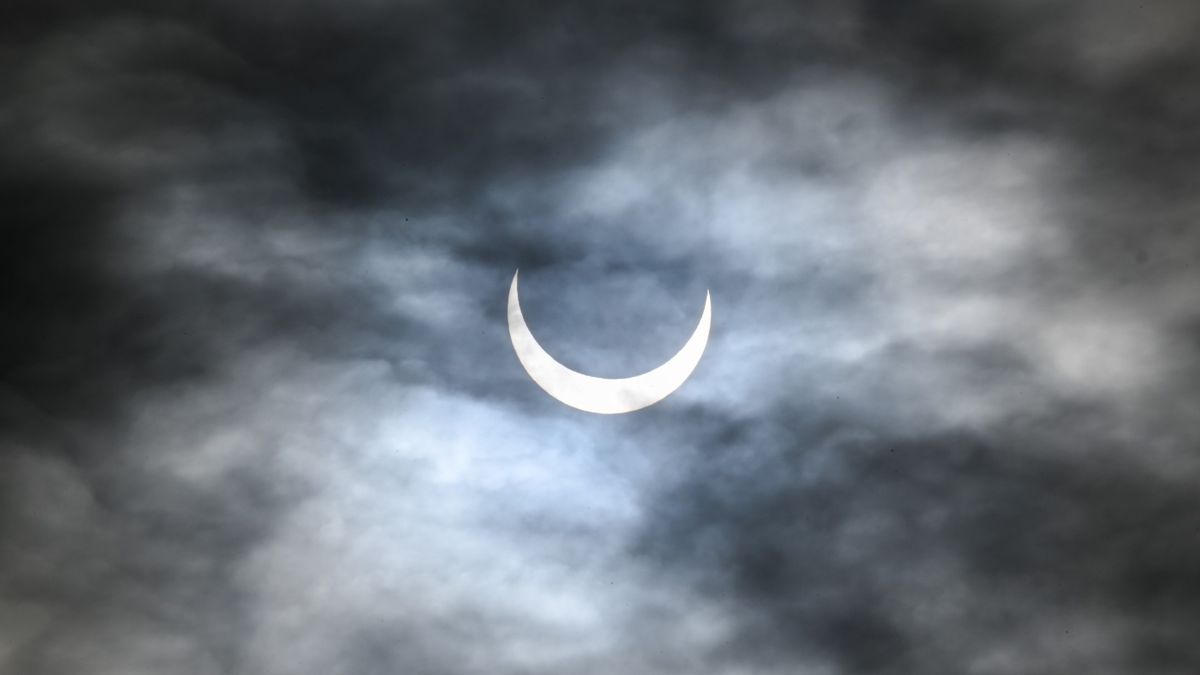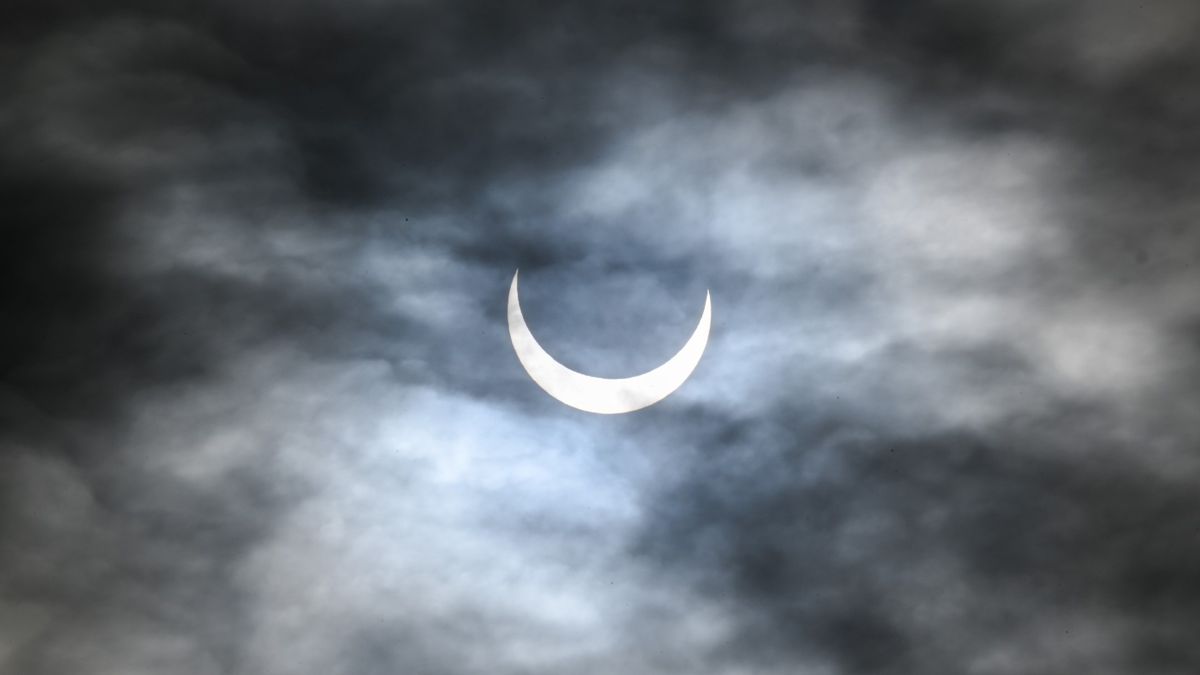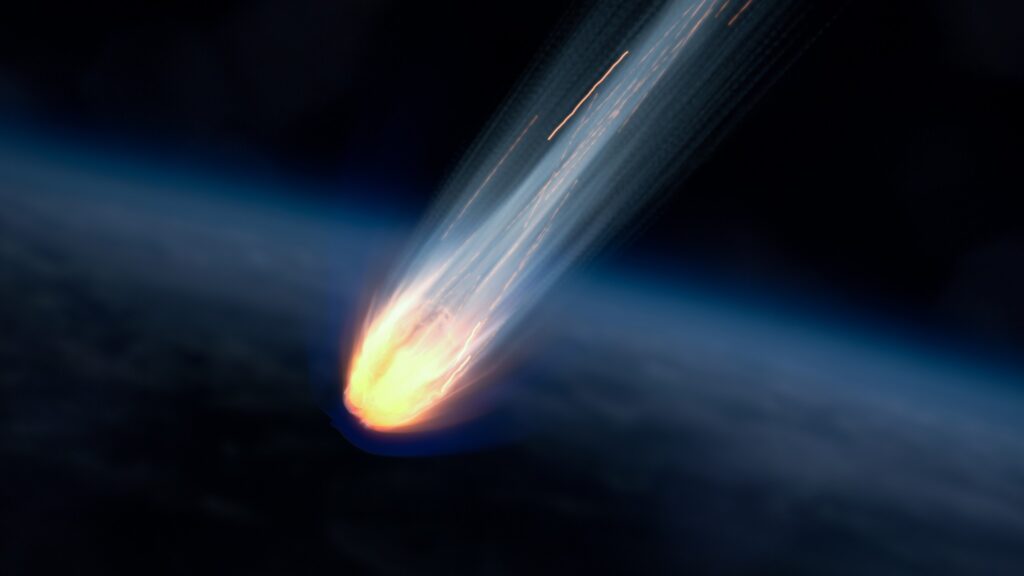
The splendor of a solar eclipse is unique to our world — nowhere else in the solar system does a planet’s moon so perfectly block the light of the sun. The fast and fleeting darkness of those events affects many things on Earth, including animal behavior and waves in the ionosphere.
Researchers have now found that cumulus cloud cover fell by more than a factor of 4, on average, as the moon’s shadow passed over Earth during a recent annular eclipse.
This little-studied aspect of solar eclipses has important lessons for geoengineering efforts aimed at blocking sunlight, the team proposed.
Related: What happens if it’s cloudy for the April 8 solar eclipse?
Experiments in the sky
Solar eclipses occur anywhere from 2 to 5 times per year, and these events confer neat opportunities for scientific investigations, said Victor J. H. Trees, a geoscientist at Delft University of Technology in the Netherlands. “Solar eclipses are unique experiments.” They allow researchers to study what happens when sunlight is rapidly obscured, he said. “They’re very different than the normal day-night cycle.”
Trees and his colleagues recently analyzed cloud cover data obtained during an annular eclipse in 2005, visible in parts of Europe and Africa. They mined visible and infrared imagery collected by two geostationary satellites operated by the European Organisation for the Exploitation of Meteorological Satellites. Going to space was key, Trees said. “If you really want to quantify how clouds behave and how they react to a solar eclipse, it helps to study a large area. That’s why we want to look from space.”
The researchers focused on a square region spanning 5° in both latitude and longitude centered above South Sudan. With their bird’s-eye perspective, they tracked cloud evolution for several hours leading up to the eclipse, during the eclipse, and for several hours afterward.
Goodbye, sun; Goodbye, clouds
Low-level cumulus clouds — which tend to top out at altitudes around 2 kilometers (1.2 miles) — were strongly affected by the degree of solar obscuration. Cloud cover started to decrease when about 15% of the sun’s face was covered, about 30 minutes after the start of the eclipse. The clouds started to return only about 50 minutes after maximum obscuration. And whereas typical cloud cover hovered around 40% in noneclipse conditions, less than 10% of the sky was covered with clouds during maximum obscuration, the team noted.
“On a large scale, the cumulus clouds started to disappear,” Trees said.
To dig into the physics behind their observations, Trees and his colleagues collected land surface temperature measurements from the same two geostationary satellites. The temperature of the ground matters when it comes to cumulus clouds, Trees said, because they are low enough to be significantly affected by whatever is happening on Earth’s surface.
Not surprisingly, land surface temperatures dropped as the moon increasingly blocked the sun’s light. “We knew that even small changes in solar radiation have an effect on the land surface temperature,” said Virendra Ghate, an atmospheric scientist at Argonne National Laboratory in Lemont, Ill., not involved in the research.
The researchers estimated a maximum change in land surface temperature of nearly 6°C for the 2005 eclipse. They also found that surface temperature decreased in lockstep with the obscuration fraction, without any significant time lag. That’s consistent with observations made during other solar eclipses.
Follow the heat
The pronounced decrease in land surface temperature during a solar eclipse is what’s driving changes in cumulus cloud cover, the researchers concluded. That’s logical, Ghate said, because cumulus clouds form when relatively warm and moist air rises from Earth’s surface, cools, and eventually condenses into cloud droplets. When land surface temperatures decrease, there’s a smaller temperature gradient near Earth’s surface and therefore a smaller force driving cloud-forming air upward, he said. “You don’t have the source of buoyancy.”
The delays that Trees and his colleagues observed — between the start of the eclipse and when clouds started dissipating and also between the time of maximum obscuration and when clouds started returning — also reveal something about the so-called boundary layer, the lowest level of Earth’s atmosphere. Each of those lags has a physical meaning, Trees said. “It tells us how quickly the air is rising.”
RELATED STORIES:
Beyond shedding light on the physics of cloud dissipation during solar eclipses, these new findings also have implications for future geoengineering efforts, Trees and his collaborators suggested. Discussions are underway to mitigate the effects of climate change by, for instance, seeding the atmosphere with aerosols or launching solar reflectors into space to prevent some of the sun’s light from reaching Earth. Such geoengineering holds promise for cooling our planet, researchers agree, but its repercussions are largely unexplored and could be widespread and irreversible.
These new results suggest that cloud cover could decrease with geoengineering efforts involving solar obscuration. And because clouds reflect sunlight, the efficacy of any effort might correspondingly decrease, Trees said. That’s an effect that needs to be taken into account when considering different options, the researchers concluded.
This article was originally published on Eos.org.



